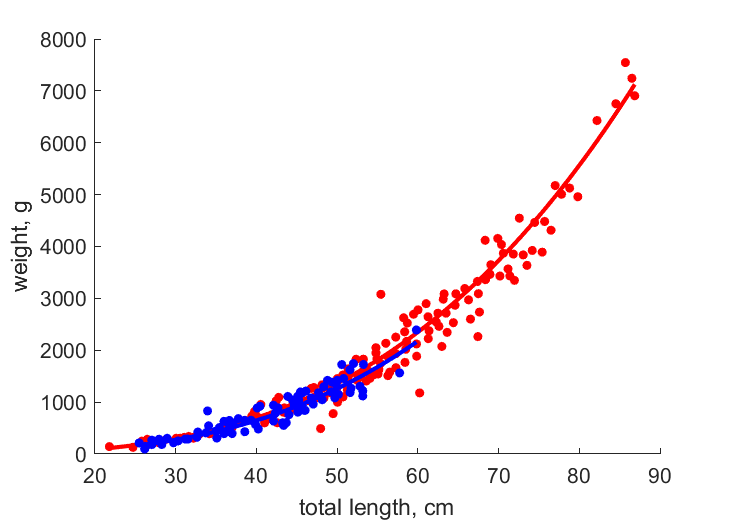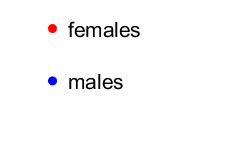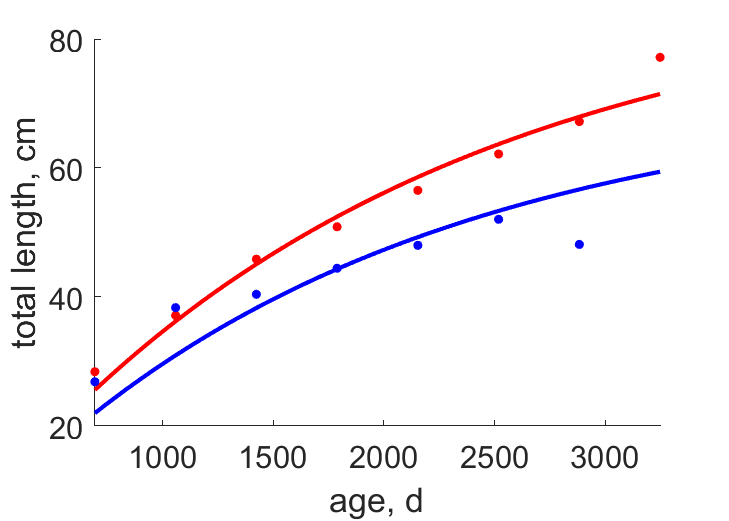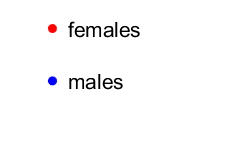Predictions & Data for this entry
| Model: abj | climate: MB, Cfa | migrate: | phylum: |
| COMPLETE = 2.5 | ecozone: MASW | food: bjPz, jiCi | class: |
| MRE = 0.042 | habitat: 0jMp, jiMcd, 0iFe, 0iMm | gender: D | order: |
| SMSE = 0.007 | embryo: Mp | reprod: O | family: |
Zero-variate data
| Data | Observed | Predicted | (RE) | Unit | Description | Reference |
|---|---|---|---|---|---|---|
| am | 4015 | 4027 | (0.003082) | d | life span | fishbase |
| Lp | 39 | 38.08 | (0.02355) | cm | total length at puberty for females | fishbase |
| Li | 83 | 82.92 | (0.0009681) | cm | ultimate total length for females | fishbase |
| Wwb | 0.00022 | 0.0002189 | (0.005068) | g | wet weight at birth | ADW |
| Wwp | 578.4 | 584.2 | (0.009992) | g | wet weight at puberty | fishbase |
| Wwi | 6000 | 6031 | (0.005133) | g | ultimate wet weight | fishbase |
| Ri | 109.6 | 109 | (0.005106) | #/d | maximum reprod rate | fishbase |
Uni- and bivariate data
| Data | Figure | Independent variable | Dependent variable | (RE) | Reference |
|---|---|---|---|---|---|
| LW_f |   | total length | weight | (0.1076) | CazoCeci2005 |
| LW_m |   | total length | weight | (0.1646) | CazoCeci2005 |
| tL_fm |   | age | total length | (0.06031) | CazoCeci2005 |
Pseudo-data at Tref = 20°C
| Data | Generalised animal | Paralichthys orbignyanus | Unit | Description |
|---|---|---|---|---|
| v | 0.02 | 0.02141 | cm/d | energy conductance |
| p_M | 18 | 19.46 | J/d.cm^3 | vol-spec som maint |
| k_J | 0.002 | 0.001983 | 1/d | maturity maint rate coefficient |
| k | 0.3 | 0.5324 | - | maintenance ratio |
| kap | 0.8 | 0.9971 | - | allocation fraction to soma |
| kap_G | 0.8 | 0.8005 | - | growth efficiency |
| kap_R | 0.95 | 0.95 | - | reproduction efficiency |
Discussion
- Males are assumed to differ from females by {p_Am} only
- I had to add 1 yr for tL data to arrive at a natural fit
Facts
- length - weight: Ww in g = 0.00676*(TL in cm)^3.10 (Ref: fishbase)
Bibliography